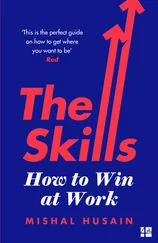The same researchers then focused on the way two games were described to six- and seven-year-olds and how that might affect their interest. One game was said to be for ‘children who are really, really smart’ and the other for ‘children who try really, really hard’. When the children were then asked about which game they wanted to play, girls were less likely than boys to express an interest in the one said to be for the ‘really, really smart’. The authors said their work provided preliminary evidence of how gendered beliefs about intelligence develop and how they relate to young children’s decision-making. 2
If this sort of perception takes hold so young, how much might it then be exacerbated by words we use differently for boys and girls and men and women? ‘Ambitious’ is usually seen as a positive if you’re male, much less so if you’re female. ‘Pushy’ is similarly negative for women, but tolerable in a man, an indication that he is going places. And then there are the flattering ways to convey respect and professional standing – by referring to someone as ‘distinguished’ or ‘esteemed’ – that are very rarely used for women.
In a striking visualisation, Professor Ben Schmidt of Northeastern University illustrated this in a study based on student feedback placed on the website RateMyProfessors.com. It revealed that words such as ‘genius’ and ‘brilliant’ were more likely to be used to describe male academics. 3Women, on the other hand, were more likely to be called ‘nice’ and, in general, described in terms that related to personality, attitude and behaviour (‘helpful’ or ‘friendly’), rather than purely to their academic or intellectual capability. ‘When we use these reviews and evaluations to assess people,’ says Professor Schmidt, ‘we need to keep in mind that the way people write them is really culturally conditioned.’ 4
Ben Schmidt did not find as much comment on female lecturers’ looks or clothing as he had expected, but in many instances details about women’s appearance and private lives creep into discussions that are supposedly about their professional abilities. Hillary Clinton once said that if she wanted to knock a story off the front page, all she needed to do was change her hairstyle, but it can get much more personal. Within hours of thirty-seven-year-old Jacinda Ardern becoming leader of New Zealand’s Labour Party she was asked in an interview whether she had made a choice between having a career or having babies. Sometimes, women’s achievements are described with references to their personal lives that would jump out as ludicrous if used for a man: when the businesswoman Rona Fairhead emerged as the preferred candidate to chair the then BBC Trust, one newspaper headline read: ‘Mother of Three Poised to Lead the BBC.’
Once you focus on the imagery we consume from an early age, other oddities become apparent. That was the experience of the Oscar-winning actress Geena Davis after she started to watch children’s television and films with her young daughter. ‘I immediately noticed that there seemed to be far more male characters than female characters,’ she later said. ‘This made no sense: why on earth in the twenty-first century would we be showing fictitious worlds bereft of female characters to our children?’ 5Deciding that she needed data to convince executives that there was a problem, she founded the Geena Davis Institute on Gender in Media in 2004. Its studies have shown that even among animated family films, a ratio of three male speaking characters for every female one prevails and that two types of female characters tend to dominate: the traditional and the ‘hypersexual’. These girls and women might be unusually thin and in sexually revealing clothing, or in animated films they might be depicted with an unnatural body shape, such as an exaggeratedly tiny waist. 6
Earlier on, the cartoonist Alison Bechdel had drawn attention to the portrayal of women in film in her own way, with a 1985 strip in which two women discuss going to the cinema. One has a rule – she’ll only go to see a film with at least two women in it, who talk to each other about something other than a man. 7It sounds basic, but once you start applying what’s come to be called ‘the Bechdel Test’, it is remarkable how few films pass it – only half of those that have ever won the Best Picture Oscar, according to a 2018 BBC analysis, and even then some of those had just one or two instances of conversation that met the requirements. 8
Even where a film is based around a strong female protagonist, she may be outnumbered in terms of her lines. In a study of film dialogue, the data website The Pudding found that was the case in Mulan , where the eponymous heroine’s dragon has considerably more lines than she does. Overall, male characters dominated the dialogue in 73 per cent of Disney/Pixar films analysed, including family favourites such as Toy Story , The Lion King , Monsters, Inc. and The Jungle Book . 9And a study made of films across the world found that women not only have fewer speaking roles than men, but that their characters are less likely to be portrayed having an occupation than women in the real-life workforce of those countries. 10
Thanks to sustained and detailed work by Dr Martha M. Lauzen at San Diego State University, we also know that there has been little change in the presence of women working behind the scenes in the film industry. Her data shows that the number employed as directors, writers, producers, cinematographers and editors hasn’t really budged in twenty years: today, just 11 per cent of directors and 4 per cent of cinematographers are women. 11
Where films do have at least one female director, there is a greater likelihood of other women being employed – a correlation that makes all the difference to someone like Lucinda Coxon, who wrote the 2015 film The Danish Girl , and who needs to find enough work to sustain her livelihood. ‘Directors are really the top of the creative tree in film,’ she says, ‘and the presence or absence of women in that role has a serious knock-on effect.’ 12
Thanks to the Harvey Weinstein allegations, the entire industry is under a new degree of scrutiny, with Melissa Silverstein, founder of the pressure group Women and Hollywood, calling it rife with ‘toxic masculinity’. ‘This is an industry that is run by men and for men,’ she says. ‘The movies we see have mostly male leads. The women depicted are mostly young, scantily clad and have little agency – all too often they are glorified props.’ 13
One of Weinstein’s own accusers painted a chilling picture of how women are widely perceived and used. ‘In this industry, there are directors who abuse their position. They are very influential, that’s how they can do that,’ wrote Léa Seydoux. ‘Another director I worked with would film very long sex scenes that lasted days. He kept watching us, replaying the scenes over and over again in a kind of stupor. It was very gross. If you’re a woman working in the film industry, you have to fight because it is a very misogynistic world. Why else are salaries so unequal? Why do men earn more than women? There is no reason for it to be that way.’ 14
Lucinda Coxon believes that everyone consuming the output of this industry, one with the power to tell stories that engage and influence us, should think about the implications of its make-up: ‘The vast, vast majority of dramatic product that you, your friends, family and co-workers have access to, in the cinema or on DVD, Netflix or plain old telly has been shaped by – and often exclusively shaped by – men. And that results in some serious distortions.’ She points to her experience on a BAFTA jury one year, where she watched thirteen hours of prime-time British TV drama and saw female characters brutally attacked again and again, to the point where it was barely noticeable any more. ‘We need to start noticing again. We need to consider how little we learn and what a warped perspective we get on the world when the gender imbalance driving its description is so strong.’
Читать дальше












